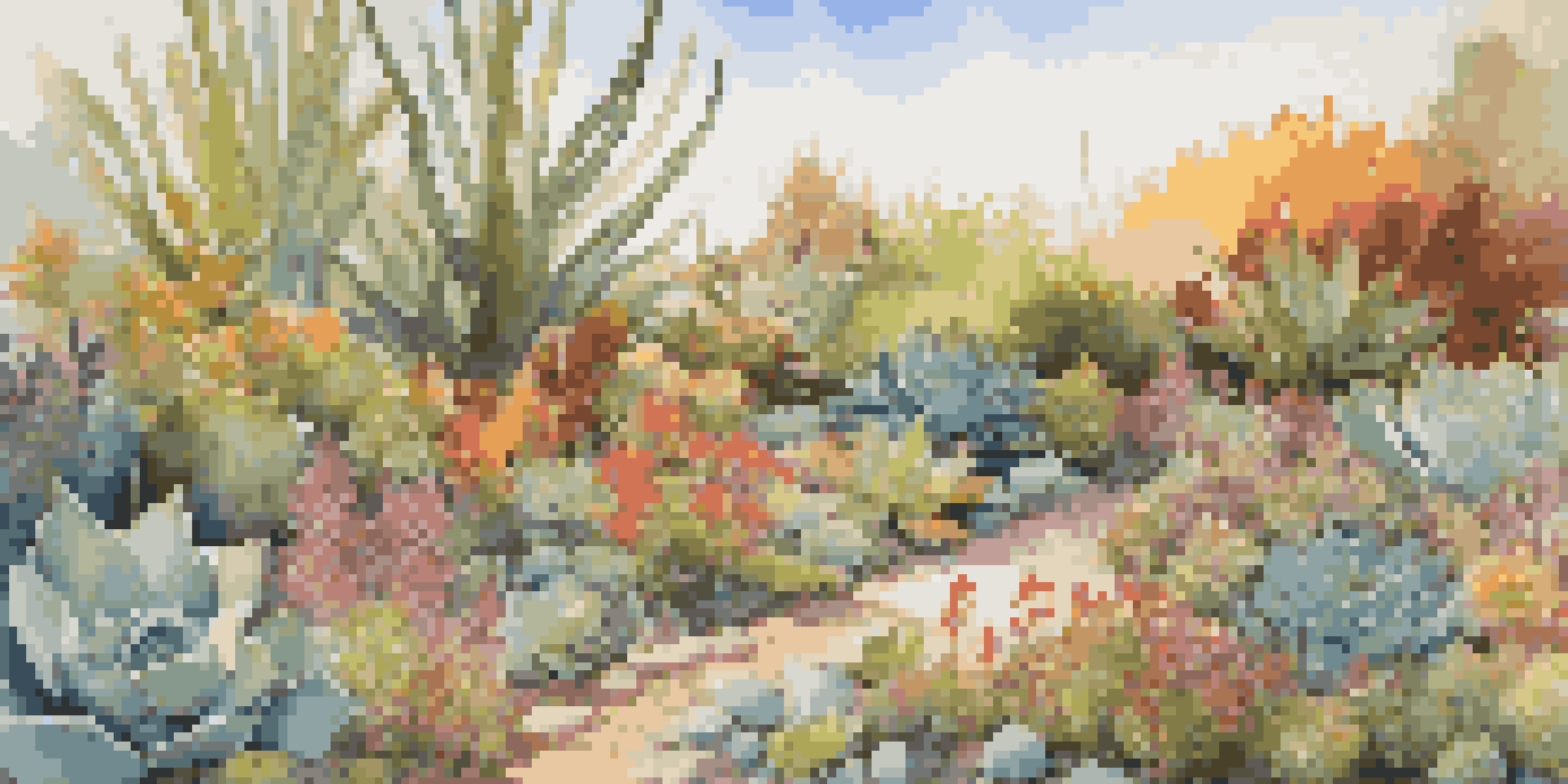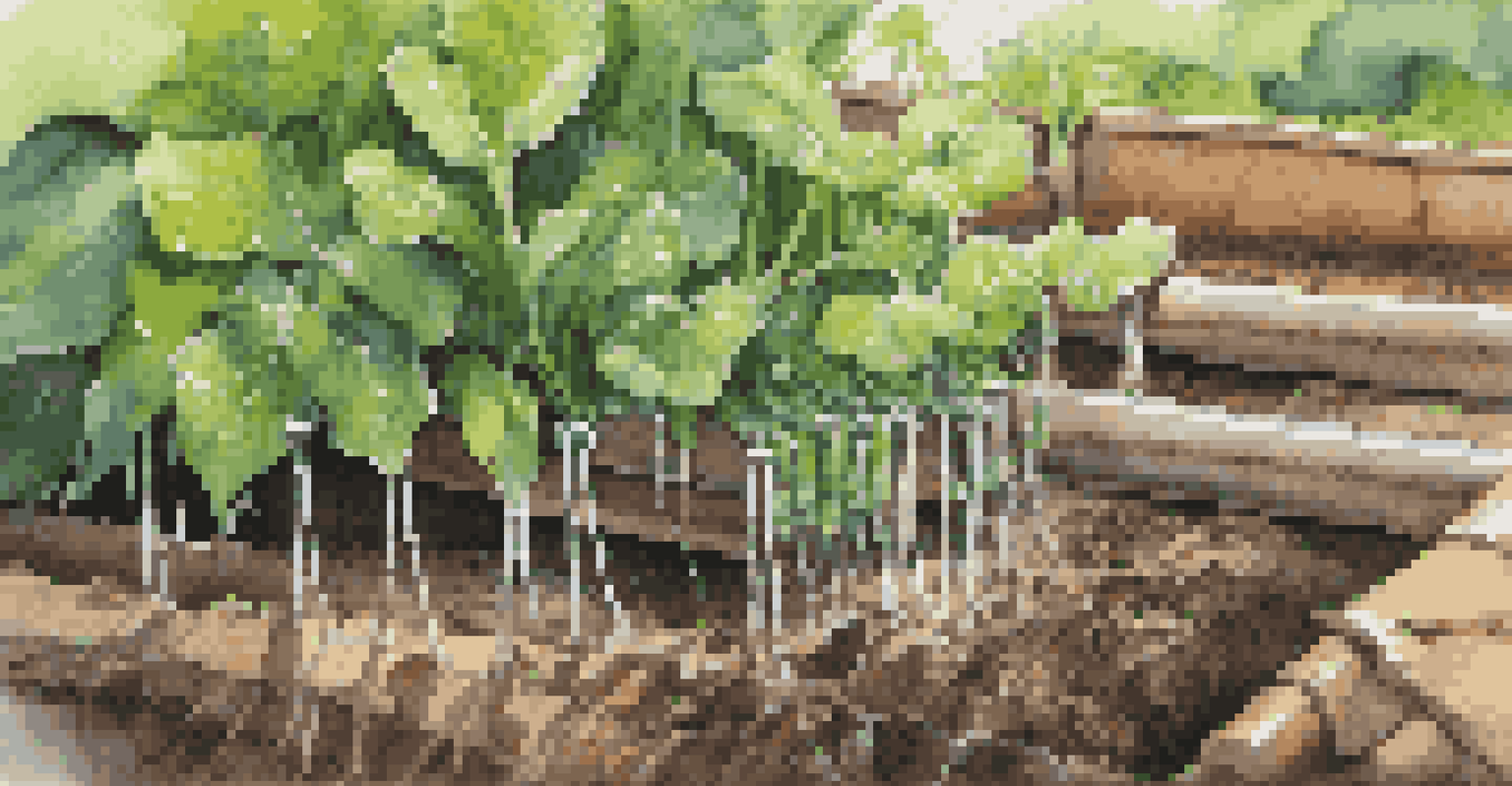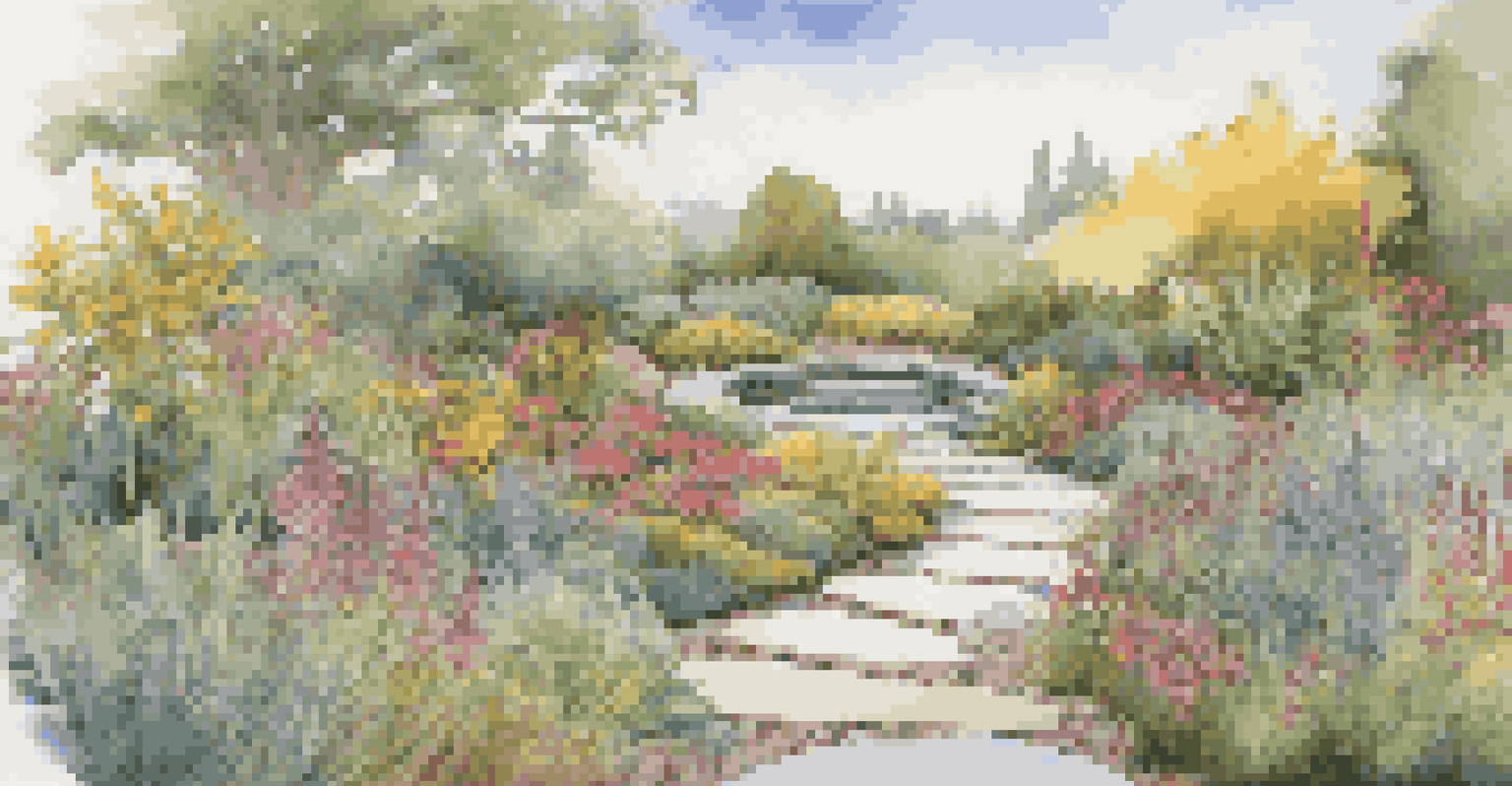Integrating Water-Saving Techniques into Your Landscape Design

Understanding the Importance of Water Efficiency in Landscaping
In today’s world, conserving water is more crucial than ever, especially in landscaping. As droughts become more frequent, understanding how to use water efficiently can make a significant impact. It’s not just about saving water; it’s about creating a sustainable environment that benefits both your garden and the planet.
Water is the most precious resource we have. Without water, there is no life.
Water-efficient landscaping not only helps reduce your water bill but also contributes to the health of local ecosystems. By minimizing water waste, you can create a thriving landscape that supports wildlife and promotes biodiversity. Plus, it’s a great way to showcase your commitment to environmental stewardship.
So, how do you begin integrating these techniques? It all starts with a solid understanding of your landscape’s unique needs and the local climate. This foundation will guide you in making choices that not only look beautiful but also save precious water resources.
Choosing Native Plants for a Water-Wise Landscape
One of the best ways to save water in your landscape is by choosing native plants. These plants are adapted to your local climate and soil conditions, meaning they require less water and maintenance. By selecting the right native species, you can create a vibrant garden that flourishes with minimal effort.

For example, if you live in a dry area, consider planting succulents or drought-resistant wildflowers. These plants not only thrive on less water but also attract pollinators, adding life to your garden. Additionally, native plants often have deeper root systems, allowing them to access moisture from the soil more effectively.
Embrace Native Plants for Efficiency
Choosing native plants helps conserve water and supports local ecosystems by thriving with minimal maintenance.
Incorporating native plants into your design is a win-win for both you and the environment. Not only will you enjoy a beautiful landscape, but you’ll also play a vital role in preserving local ecosystems and reducing the demand for irrigation.
Utilizing Mulch for Moisture Retention
Mulch is a fantastic ally in the quest for a water-efficient garden. By applying a layer of organic or inorganic mulch around your plants, you can significantly reduce evaporation and keep the soil moist. This simple step can lead to healthier plants and less frequent watering.
The environment is where we all meet; where we all have a mutual interest; it is the one thing all of us share.
Organic mulches, like wood chips or straw, not only help retain moisture but also improve soil quality as they break down. This process enriches the soil, leading to a more robust ecosystem in your garden. Plus, mulch can suppress weeds, reducing competition for water and nutrients.
When adding mulch, aim for a thickness of 2-4 inches to maximize its benefits. This will create a protective barrier that helps maintain consistent soil moisture, allowing your plants to thrive even during dry spells.
Implementing Drip Irrigation for Targeted Watering
If you're looking for a highly efficient way to water your landscape, consider installing a drip irrigation system. This method delivers water directly to the roots of your plants, minimizing evaporation and runoff. It’s a smart technology that ensures your plants receive just the right amount of moisture.
Drip irrigation is particularly beneficial for garden beds and vegetable patches, where precise watering can make a noticeable difference. By targeting the roots, you can encourage deeper growth and healthier plants. Plus, you can set timers to automate watering, making it a hassle-free solution.
Utilize Drip Irrigation Systems
Drip irrigation delivers water directly to plant roots, minimizing evaporation and ensuring efficient moisture use.
Not only does drip irrigation save water, but it also promotes better plant health. With consistent moisture levels, your plants can thrive and flourish, giving you a lush landscape that’s both beautiful and sustainable.
Creating Contours and Rain Gardens for Natural Drainage
Another effective technique for conserving water in your landscape is creating contours and rain gardens. By shaping the land to direct rainwater runoff, you can naturally hydrate your plants and reduce the need for additional watering. This approach harnesses the power of nature to manage water efficiently.
Rain gardens, in particular, are designed to capture and absorb rainwater from rooftops and driveways. By planting native plants in these areas, you create a beautiful and functional space that benefits both your garden and the local ecosystem. The native plants help filter pollutants and provide habitat for wildlife.
Incorporating these features not only enhances your landscape but also contributes to stormwater management in your community. It’s a proactive step toward creating a sustainable environment while enjoying a unique and attractive garden design.
Choosing Hardscape Wisely to Reduce Water Use
Hardscaping refers to the non-plant elements in your landscape, like patios, pathways, and retaining walls. Choosing the right materials can significantly influence water conservation in your garden. For example, permeable paving allows rainwater to soak through, reducing runoff and replenishing groundwater.
Integrating hardscape features wisely can also reduce the amount of lawn that requires frequent watering. By replacing traditional grass areas with stones, tiles, or gravel, you can create aesthetically pleasing spaces that require minimal irrigation. This not only saves water but also reduces maintenance efforts.
Incorporate Rain Gardens for Drainage
Creating rain gardens captures and absorbs rainwater, reducing the need for additional watering while enhancing biodiversity.
Incorporating hardscape elements can enhance the functionality of your outdoor space while promoting water conservation. It’s a practical choice that adds character to your landscape while being environmentally responsible.
Monitoring and Adjusting Your Water Usage
Finally, to truly master water-saving techniques in your landscape, it’s essential to monitor and adjust your water usage. Regularly assessing how much water your plants need can help you fine-tune your irrigation practices. This not only saves water but also ensures that your plants receive the care they need.
Consider investing in a rain gauge or moisture meter to help you keep track of water levels in your garden. These tools can alert you when your plants need a drink or when you can skip watering altogether, saving both water and time.

By staying proactive and adapting to changing weather conditions and plant needs, you can create a thriving landscape that minimizes water waste while maximizing beauty. It’s the culmination of careful planning and responsive care that leads to a truly sustainable garden.